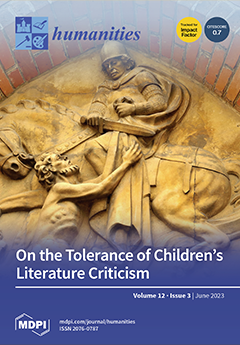Afropean anthropologist, philosopher, and art curator Dénètem Touam Bona is an original “border thinker” and “crosser” of geographic and conceptual boundaries working within a tradition of Caribbean historical poetics, notably represented by Édouard Glissant. He explores ideas of “fugue” and “refuge” in light
[...] Read more.
Afropean anthropologist, philosopher, and art curator Dénètem Touam Bona is an original “border thinker” and “crosser” of geographic and conceptual boundaries working within a tradition of Caribbean historical poetics, notably represented by Édouard Glissant. He explores ideas of “fugue” and “refuge” in light of the experience of maroons or escaped slaves, key actors of the simultaneous expansion of freedom and industrial-scale chattel slavery in the Americas. In “
Freedom as Marronage” (2015), Neill Roberts defines freedom itself as perpetual flight, and locates its very origins in the liminal and transitional spaces of slave escape, offering a perspective on modernity that gives voice to hunted fugitives, defiant of its ecology, enclosures, and definition, and who were ultimately excised from its archive. Touam Bona’s “cosmo-poetics” excavates marronage as a mode of invention, subterfuge and utopian projection that revisits its history and representation; sacred, musical, ecological, and corporeal idioms; and alternative forms of community, while also inviting contemporary parallels with the “captives” of the global border regime, namely fugitives, nomads, refugees, and asylum seekers who perpetually evade norms, controls, and domestication. He deploys the metaphor of the liana, a long-stemmed tropical vine that climbs and twines through dense forests, weaving relation in defiance of predation, to evoke colonized and displaced peoples’ subterranean evasion of commodification, classification, control, cultural erasure, and ecological annihilation. This article frames his work within an Afro-diasporic history and transnational cultural criticism that envisions fugitivity and exilic spaces as dissonant forms of resistance to the coloniality of power, and their relevance to understanding racialization, representations of the past, and narratives of freedom and belonging across borders.
Full article





